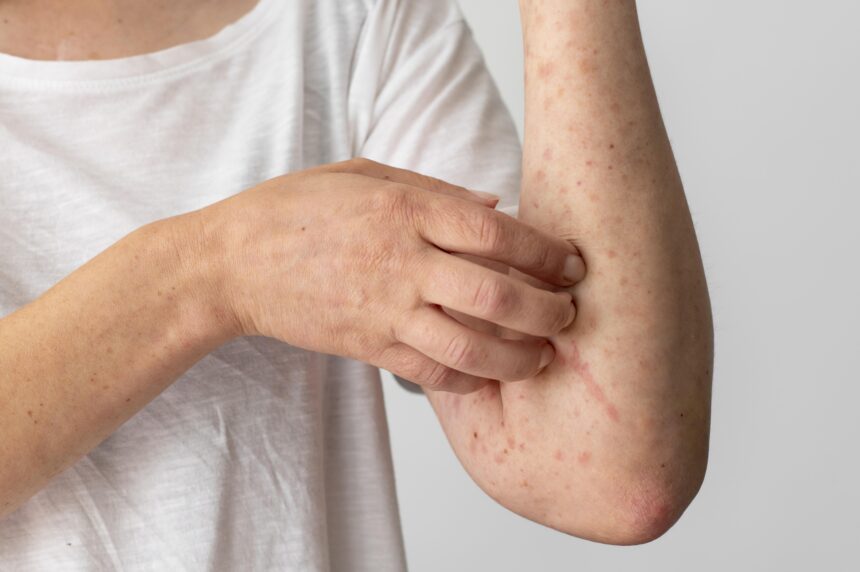Scabies, a highly contagious skin infestation caused by the Sarcoptes scabiei mite, affects millions worldwide annually. Despite its prevalence, the condition often goes undiagnosed due to its resemblance to other skin conditions. Recognizing the signs of scabies is crucial for timely treatment and prevention of further spread.
1. Intense Itching: The hallmark symptom of scabies is relentless itching, typically worsening at night or after a hot shower. This itchiness is the body’s allergic response to the mite’s saliva, feces, and eggs deposited under the skin.
2. Pimple-Like Rash: Scabies often manifests as a rash consisting of tiny, red bumps or pimples, which may appear in clusters or tracks. These lesions commonly occur in the webs of fingers, wrists, elbows, armpits, waistline, buttocks, and genital area. In infants and young children, the rash can extend to the face, scalp, palms, and soles of the feet.
3. Burrows and Tracks: Burrows, thin, grayish-white, thread-like lines on the skin surface, are a classic sign of scabies. These burrows are the tunnels where female mites lay their eggs and can be found between fingers, on wrists, elbows, and other warm, moist areas of the body.
4. Secondary Infections: Scratching the itchy rash can break the skin barrier, leading to bacterial infections like impetigo or cellulitis. Symptoms of secondary infections include increased pain, warmth, redness, and pus drainage from the affected area.
5. Persistent Symptoms: If left untreated, scabies symptoms can persist for weeks or even months. The itching and rash may become increasingly severe, affecting sleep and overall quality of life. Additionally, continued exposure to the mites can result in a more widespread infestation.
6. Transmission: Scabies spreads through prolonged, skin-to-skin contact with an infested individual. It can also be transmitted via infested bedding, clothing, or furniture, although this mode of transmission is less common. Crowded living conditions, such as nursing homes, prisons, and childcare facilities, increase the risk of transmission.
Treatment: Timely diagnosis and treatment are essential for managing scabies and preventing its spread. Treatment typically involves topical medications like permethrin or oral medications like ivermectin, prescribed by a healthcare professional. It’s important to treat all household members and close contacts simultaneously to prevent re-infestation.
Prevention: Practicing good hygiene, avoiding close contact with infested individuals, and regularly washing bedding and clothing in hot water can help prevent scabies infestations. Promptly treating any suspected cases and avoiding sharing personal items such as towels or clothing can also reduce the risk of transmission.
Recognizing the signs of scabies is crucial for prompt diagnosis and treatment. If you suspect you or someone you know may have scabies, consult a healthcare professional for proper evaluation and management. With early intervention and preventive measures, scabies can be effectively controlled, minimizing discomfort and preventing further spread.










